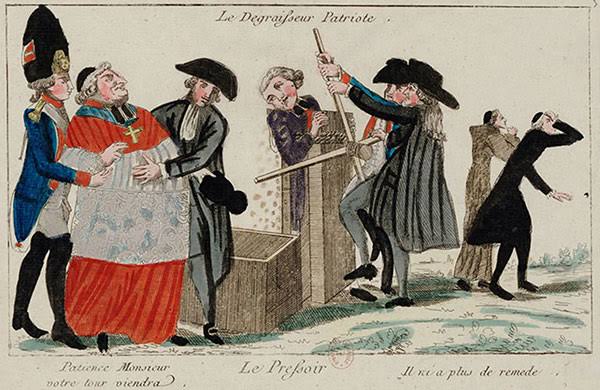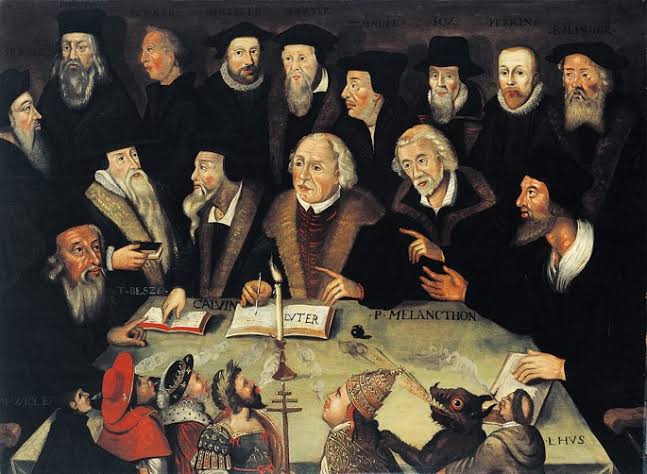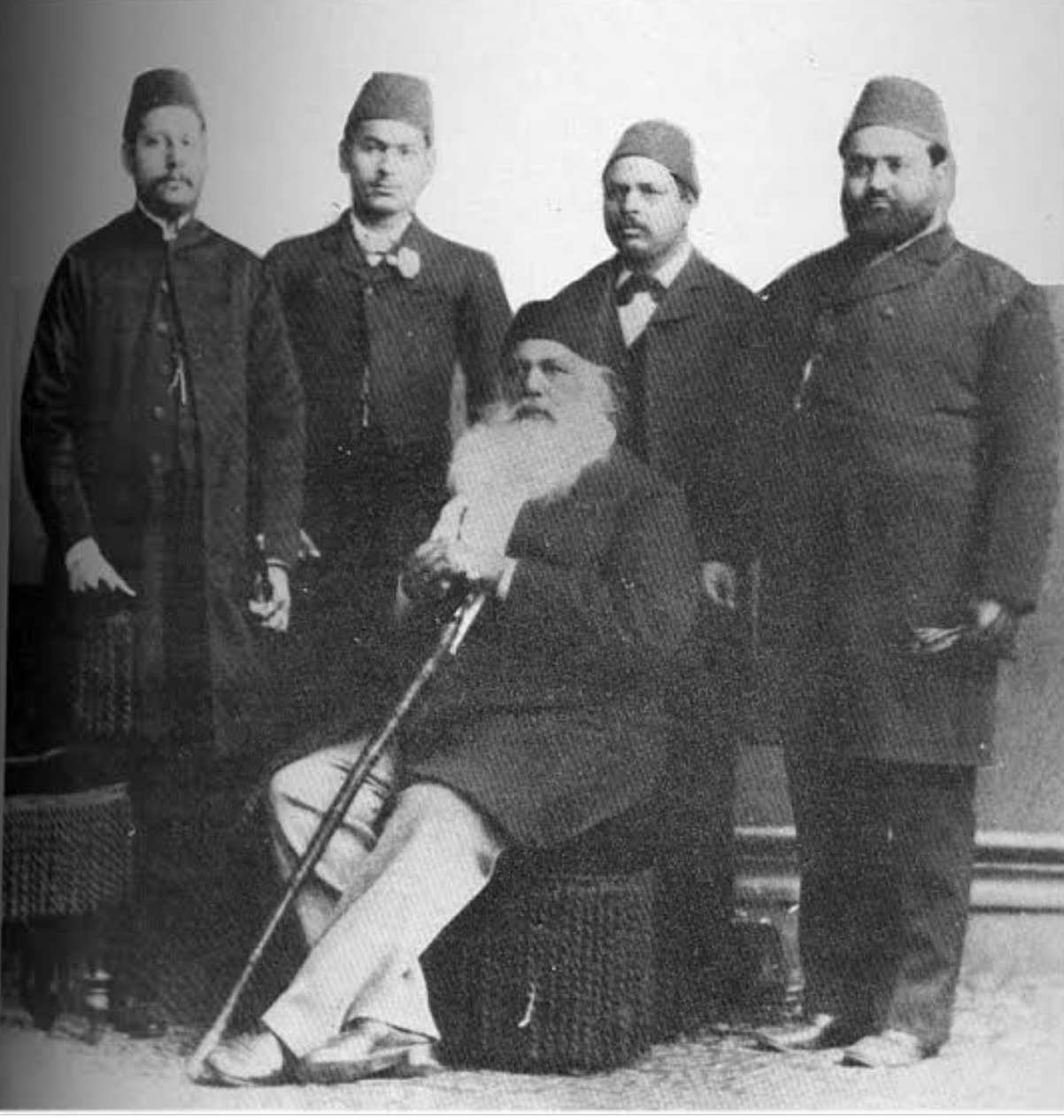
According to the Canadian philosopher Charles Tylor, three categories of secularism have evolved since the proper emergence of the idea —mainly from the 18th century onwards. He describes “Secularity 1” as the total expulsion of religion from all spheres of public life. This strand can be traced back to the turbulent days of the 18th-century French Revolution, and also in the policies of Mao Tse Tung’s China (1949-76), Joseph Stalin’s Soviet Union (1922-52), the Khmer Rouge regime in Cambodia (1975-79) and currently in North Korea.
This form of secularism is also known as ‘laïcité’ which originated during the French Revolution. Many aspects of it still inform French secularism today. A form of laïcité was also practised by the Turkish state during the rise and coming to power of Turkish nationalist Kemal Ataturk (1923-38).
However, some advocates of laïcité like to differentiate this strand of secularism with the one that was imposed in communist countries such as China, the Soviet Union, Cambodia, and North Korea.
However, Tylor is hesitant in defining “Secularity 1” as secularism proper. According to him, a polity needs to fulfil three criteria to qualify as secular: there should be equality of people of all faiths; “all spiritual groups must be heard”; and there should be respect for the “free exercise of religion” (as long as it is not political in nature).


“Secularity 2” is largely a social occurrence triggered by powerful intellectual currents and a shift from traditional modes of economics to modern ones. The most prominent example is the erosion of the power of the church in Europe during the Age of Enlightenment from the 18th century onwards.
The period saw the growth of constitutional democracy, modern science, industrialisation and the separation of the church and the state. It saw reason as being the primary source of authority. Unlike Secularity 1, Secularity 2 is not anti-religion but advocates the relegation of faith to the private sphere.
But much of Tylor’s study is dedicated to “Secularity 3.” To Tylor, this is the category that best defines the ‘secular age’ that has continued to develop well into the 21st century. But Tylor posits that Secularity 1 and 2 cannot be explained away as being outcomes of the rise of the modern sciences and modern models of politics and economics.
Instead, he writes that secularism was actually a continuation of a reformation process within the Christian faith. His thesis proposes that, for over a thousand years, there has been constant pressure within Christianity to continue to reform itself.
Fearful of crumbling in the face of modernity, Christianity tried to keep pace with the change by modernising itself. This gave the believers the space to let go of the idea of the state being a political and moral expression of faith, without renouncing faith itself or without one first coming to a self-attained understanding of it.
Tylor writes that, had this not happened, secularism could never have managed to attract the consent of so many populations in Europe.
Tylor’s Secularity 3 is thus about reaching a secular state of existence by actually reflecting on spiritual and theological ideas that have opened up for intellectual scrutiny. For him, secularism is part of the tradition of reform that has continued within Christianity. He writes that this is also why secularism has managed to survive in countries such as the US where most citizens call themselves religious.


Intrigued by Tylor’s theory, the French political scientist Christophe Jaffrelot, in a 2014 essay for France’s Hyper Articles en Ligne, went on to identify a “Secularity 4.” Jaffrelot writes that Tylor’s secularity types were largely associated with the secularism that developed in the West. Being an expert on South Asia, Jaffrelot takes the example of Muslims in India, and then in Pakistan, to define a Secularity 4.
According to Jaffrelot, economic, scientific, and political modernity introduced by the British in South Asia saw modern Muslim reformers wanting to relegate Islam’s rituals to the private sphere but transform Islam as an identity-marker. In other words, the process advocated making Islamic rituals private and Islam public as a cultural-political identity marker.
Jaffrelot writes that when modern Muslim reformers such as Sir Syed Ahmad Khan and Muhammad Iqbal tried to demonstrate that Western modernity and Islam were compatible and that this was what made Muslims a unique cultural entity, they opened the way for politicians such as Jinnah to claim that the Muslims of India were a separate cultural entity, but one which was as modern as any Western national community.
According to Jaffrelot, Sir Syed, Iqbal and Jinnah formulated a unique way to form a non-theological Muslim polity without compromising its Muslim identity, because, after all, this was what was to gain a separate Muslim country.
Jaffrelot writes that this is why, right from the onset, the Pakistani state tried to undermine and isolate those demanding a theocracy. The state did this by ‘nationalising Islam.’ Jaffrelot writes that the state invested in highlighting Islam as a modern political ideology of Pakistan but not the basis of formulating laws.
He defines this as ‘secularisation without secularism.’ The state continued to usurp intellectual and physical spaces once dominated by the clerics, pirs and ulema. This way the state gave itself the sole right to define what an Islamic state was and at the same time deriding the non-state explanations of faith as being ‘anti-progress’ and ‘backward.’

According to Jaffrelot, this process peaked during the Ayub regime (1958-69). He writes that it continued across the Z.A. Bhutto regime (1971-77) and even during the conservative Gen Zia dictatorship in the 1980s. But beginning in the mid-1970s, Jaffrelot writes, due to purely political reasons, a point came when the state found it necessary to engage with non-state elements in this respect.
This gave those who were once blocked from the state’s religious narrative the chance to become stakeholders of the process. They managed to change its course. This resulted in constitutional clauses based on certain strands of the faith, a clear departure from the state’s ways till the mid-1970s.
Eventually, from the mid-1980s onwards, the state opted out from framing Islam in the context of how it was framed by the likes of Sir Syed, Iqbal, Jinnah and Ayub. Unchecked by the state (and sometimes even encouraged by it), the process spiralled out of control, causing religious violence and insurgencies in a now highly polarised polity.
Recently, the state has been restating that ‘the monopoly of violence remains with the state.’ This is a reiteration of the state’s urgency to reclaim the space to define what religion was in the context of Pakistan and therefore, to once again, neutralise the state’s competitors in this respect and return to what Jaffrelot calls Secularity 4: secularisation without secularism.
This form of secularism is also known as ‘laïcité’ which originated during the French Revolution. Many aspects of it still inform French secularism today. A form of laïcité was also practised by the Turkish state during the rise and coming to power of Turkish nationalist Kemal Ataturk (1923-38).
However, some advocates of laïcité like to differentiate this strand of secularism with the one that was imposed in communist countries such as China, the Soviet Union, Cambodia, and North Korea.
However, Tylor is hesitant in defining “Secularity 1” as secularism proper. According to him, a polity needs to fulfil three criteria to qualify as secular: there should be equality of people of all faiths; “all spiritual groups must be heard”; and there should be respect for the “free exercise of religion” (as long as it is not political in nature).

The church taken to the gallows: The French Revolution

The ‘Maoist’ Khamer Rouge in Cambodia (1975-79) completely abolished religion in the country. Thousands of Buddhist priests were killed or tortured and places of worship destroyed.
“Secularity 2” is largely a social occurrence triggered by powerful intellectual currents and a shift from traditional modes of economics to modern ones. The most prominent example is the erosion of the power of the church in Europe during the Age of Enlightenment from the 18th century onwards.
The period saw the growth of constitutional democracy, modern science, industrialisation and the separation of the church and the state. It saw reason as being the primary source of authority. Unlike Secularity 1, Secularity 2 is not anti-religion but advocates the relegation of faith to the private sphere.
But much of Tylor’s study is dedicated to “Secularity 3.” To Tylor, this is the category that best defines the ‘secular age’ that has continued to develop well into the 21st century. But Tylor posits that Secularity 1 and 2 cannot be explained away as being outcomes of the rise of the modern sciences and modern models of politics and economics.
Instead, he writes that secularism was actually a continuation of a reformation process within the Christian faith. His thesis proposes that, for over a thousand years, there has been constant pressure within Christianity to continue to reform itself.
Fearful of crumbling in the face of modernity, Christianity tried to keep pace with the change by modernising itself. This gave the believers the space to let go of the idea of the state being a political and moral expression of faith, without renouncing faith itself or without one first coming to a self-attained understanding of it.
Tylor writes that, had this not happened, secularism could never have managed to attract the consent of so many populations in Europe.
Tylor’s Secularity 3 is thus about reaching a secular state of existence by actually reflecting on spiritual and theological ideas that have opened up for intellectual scrutiny. For him, secularism is part of the tradition of reform that has continued within Christianity. He writes that this is also why secularism has managed to survive in countries such as the US where most citizens call themselves religious.

Secularism in Europe and the US emerged from reforms in Christianity.

One of the main planks of secularism in the US has always been to keep religion away from the public school system.
Intrigued by Tylor’s theory, the French political scientist Christophe Jaffrelot, in a 2014 essay for France’s Hyper Articles en Ligne, went on to identify a “Secularity 4.” Jaffrelot writes that Tylor’s secularity types were largely associated with the secularism that developed in the West. Being an expert on South Asia, Jaffrelot takes the example of Muslims in India, and then in Pakistan, to define a Secularity 4.
According to Jaffrelot, economic, scientific, and political modernity introduced by the British in South Asia saw modern Muslim reformers wanting to relegate Islam’s rituals to the private sphere but transform Islam as an identity-marker. In other words, the process advocated making Islamic rituals private and Islam public as a cultural-political identity marker.
Jaffrelot writes that when modern Muslim reformers such as Sir Syed Ahmad Khan and Muhammad Iqbal tried to demonstrate that Western modernity and Islam were compatible and that this was what made Muslims a unique cultural entity, they opened the way for politicians such as Jinnah to claim that the Muslims of India were a separate cultural entity, but one which was as modern as any Western national community.
According to Jaffrelot, Sir Syed, Iqbal and Jinnah formulated a unique way to form a non-theological Muslim polity without compromising its Muslim identity, because, after all, this was what was to gain a separate Muslim country.
Jaffrelot writes that this is why, right from the onset, the Pakistani state tried to undermine and isolate those demanding a theocracy. The state did this by ‘nationalising Islam.’ Jaffrelot writes that the state invested in highlighting Islam as a modern political ideology of Pakistan but not the basis of formulating laws.
He defines this as ‘secularisation without secularism.’ The state continued to usurp intellectual and physical spaces once dominated by the clerics, pirs and ulema. This way the state gave itself the sole right to define what an Islamic state was and at the same time deriding the non-state explanations of faith as being ‘anti-progress’ and ‘backward.’

Secularisation without secularism: 19th-century Muslim reformists in India attempted to relegate Islamic rituals to the private space and bring Islam as a political identity-marker in public sphere.
According to Jaffrelot, this process peaked during the Ayub regime (1958-69). He writes that it continued across the Z.A. Bhutto regime (1971-77) and even during the conservative Gen Zia dictatorship in the 1980s. But beginning in the mid-1970s, Jaffrelot writes, due to purely political reasons, a point came when the state found it necessary to engage with non-state elements in this respect.
This gave those who were once blocked from the state’s religious narrative the chance to become stakeholders of the process. They managed to change its course. This resulted in constitutional clauses based on certain strands of the faith, a clear departure from the state’s ways till the mid-1970s.
Eventually, from the mid-1980s onwards, the state opted out from framing Islam in the context of how it was framed by the likes of Sir Syed, Iqbal, Jinnah and Ayub. Unchecked by the state (and sometimes even encouraged by it), the process spiralled out of control, causing religious violence and insurgencies in a now highly polarised polity.
Recently, the state has been restating that ‘the monopoly of violence remains with the state.’ This is a reiteration of the state’s urgency to reclaim the space to define what religion was in the context of Pakistan and therefore, to once again, neutralise the state’s competitors in this respect and return to what Jaffrelot calls Secularity 4: secularisation without secularism.
